https://tech.sina.com.cn/it/2019-05-25/doc-ihvhiqay1232883.shtml
美封杀让中国最牛街道办火了 这里凭啥这么彪悍?
美封杀让中国最牛街道办火了 这里凭啥这么彪悍?
原标题:美国封杀让中国最牛街道办火了!深圳南山凭什么这么彪悍?
来源:瞭望智库
深圳南山区粤海街道火了。
有网友调侃道,从中兴、华为,再到大疆,美国发动的对华贸易战,一直没有超出粤海街道办的范围。
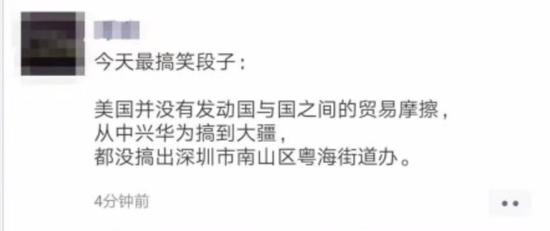
#美国 粤海街道办#顺势登上微博热搜,阅读量达到1407万。

不过,据新京报22日消息,粤海街道科技园社区工作站表示,网上所传中兴、华为和大疆三家企业均已搬离当地。
虽然企业已离去,但它们在粤海从无到有、从小到大、从大到强却是不争的事实。
南山区到底有多强?
文 | 库叔
本文由瞭望智库综编。
1
到底多强?
南山区被称为“中国硅谷”。
据统计,目前注册地址在深圳南山区的A股上市公司有114家,且多为高新技术行业。与之对应的是北京海淀区有116家,上海浦东新区有19家。
这114家中,包含医药生物6家、信息设备18家、信息服务19家、电子21家。
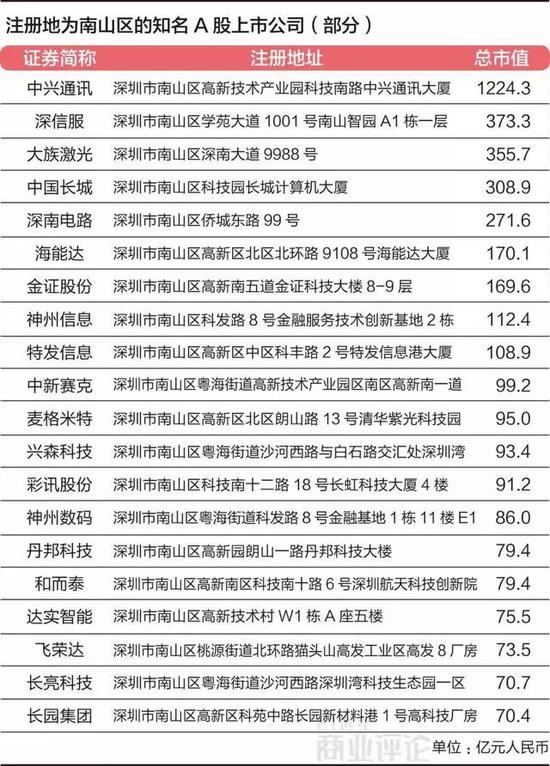 (图源:21世纪商业评论)
(图源:21世纪商业评论)
据《2017中国独角兽企业发展报告》,深圳共有14家独角兽企业,分别为:菜鸟网络、微众银行、优必选、聚宝匯、腾讯云、柔宇科技、土巴兔、丰巢科技、随手科技、房多多、辣妈帮、越海全球供应链、奥比中光、碳云智能。
除柔宇科技总部迁往龙岗区外,其余13家企业均为南山企业。
从民营企业数量看,南山区也独占鳌头。这里的民企总数接近38万家,平均4名常住人口就拥有1家企业。
顺丰、瑞声科技等8家企业,入选中国民企500强,超全省1/8。
马化腾、许家印、陈志列3人入选“改革开放40年百名杰出民营企业家”。
根据《2018年胡润全球富豪榜》,马化腾和许家印,分别以2950亿元和2600亿元的财富,入选全球华人富豪。
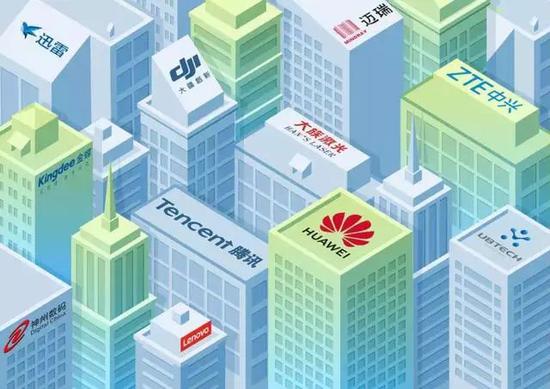 (图源:21世纪商业评论
(图源:21世纪商业评论
众多科技公司,带来的是惊人的GDP。
根据当地政府发布的数据,2018年南山区的GDP突破5000亿大关,达到了5018亿,连续6年位列广东区(县)第一、全国第三。
南山区常驻人口约为142万人,人均GDP超35万元,堪比发达国家水平。
南山区面积为182平方公里,下辖8个街道,其中,最近备受瞩目的粤海街道实力最强。
粤海街道位于南山区的中心,面积约20平方公里,在这片不大的地方,GDP高达2509亿元,占了南山区的半壁江山。
如果把粤海看做一座城市的话,其GDP轻松跻身全国100强。
粤海街道芯片企业云集,如中星微公司生产多媒体芯片,2003年时曾占据全球市场份额的60%。
晶晨半导体则是今年申报科创板的芯片第一股,被称为“机顶盒芯片之王”。
其他街道也不遑多让,2017年,招商街道服务的资产就高达2604亿元,即使排名第八的蛇口街道,服务的对象资产也超过120亿元。
众多优质企业与巨量GDP的背后,是可喜的创新能力与孵化能力。
在《中国区域孵化能力评价研究报告2016》(以下简称《报告》)中,南山区就以87.58分位居第一。
北京海淀区以84.00分位居第二,上海浦东新区得分74.78。
 (图片来源:《中国区域孵化能力评价研究报告2016》)
(图片来源:《中国区域孵化能力评价研究报告2016》)
南山区在创新成果指标的排名也是名列前茅。
据统计,2016年南山区的专利授权数达到242.47件/万人,专利密度远远高于第二位的杭州滨江区(191.6件/万人)和第三位的西安雁塔区(109.8件/万人);
在高新技术产业产值方面,南山区以4152亿元稳居榜首。
这两个指标充分反映出南山区以企业为主导的创新模式的优越性。
中兴、迈瑞、深大、南科大、中科院先进院等12家企业和机构,摘取10项国家科学技术奖,占全市2/3;
微芯生物、国民技术获2项中国专利金奖,占全国1/10;
腾讯获外观设计金奖,占全国1/5;
中集研制的深海钻井平台“蓝鲸1号”成功试采可燃冰,被誉为“大国重器”。
此外,中国证券业协会注册登记数据显示,深圳超过75%的风投、创投机构集聚在南山。
2
从何而来?
深圳南山区的发展,始于改革开放。
1978年10月9日,一份《关于充分利用香港招商局问题的请示》以交通部的名义上报中共中央、国务院,第一次提出了“适应国际市场的特点,走出门去搞调查,做买卖”的建议。
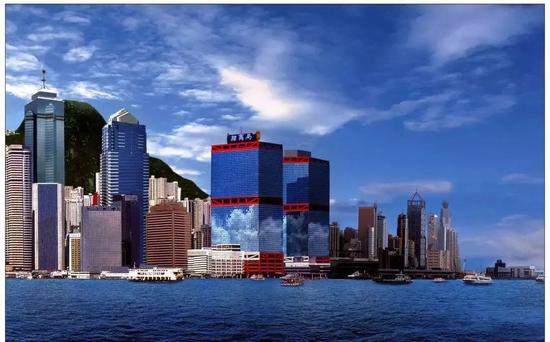 (图为香港招商局 图源:集团官网)
(图为香港招商局 图源:集团官网)
数日后,招商局第29任董事长袁庚正式提出在深圳蛇口筹建蛇口工业开发区的构想:“选定在临近香港的宝安蛇口公社境内建立工业区。这样既能利用国内较廉价的土地和劳动力,又便于利用国际的资金、先进技术和原料,把两者现有的有利条件充分利用并结合起来。”
12月18日,在党的十一届三中全会在北京正式开幕的同时,交通部和广东省通过了袁庚的构想。
25天后,1979年1月31日,袁庚飞赴北京,在中南海当面向中央领导汇报,提出要给招商局一块工业用地。
中央领导用笔在地图上一画,就把包括现在的宝安区到华侨城七八十平方公里的地方都划了进去:“袁庚,这个都给你。”
袁庚吓了一跳,说:“我怎么敢要这么多。”
于是,中央领导用红铅笔在地图上轻轻一勾,笑道:“那就给你这个半岛吧。”
这个半岛便是日后的蛇口工业区,现在隶属于南山区。
1979年2月2日,国务院批准由香港招商局在蛇口2.14平方公里的土地上,建立中国大陆第一个出口加工工业区。
蛇口工业区从设想到行动,前后仅三个月,实属罕见。
经过认真的规划设计后,7月8日,蛇口工业区正式破土动工,被称为中国改革开放的“开山炮”。
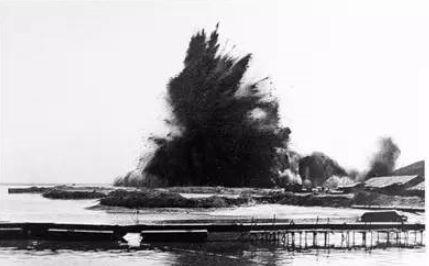 (图为蛇口开山炮)
(图为蛇口开山炮)
香港招商局花了近一年的时间建成了600米的码头泊位,可停靠5000吨以下的货船。
这样,蛇口顿时具备起港运的功能,工业区与香港互通航班客轮,解决了货运交通的瓶颈。
袁庚走遍香港,向港商和银行借贷,前后两年,招商局借进15亿元。这笔钱被用来平衡土地、建设工业基础设施和生活设施。
同时,袁庚还大大简化招商程序,外商到蛇口办公司,从土地、协议到招工,往往个把月便能全部搞掂。
很快,蛇口就成了中国最开放的工业区,企业和人才纷涌而入,两年多的时间,企业已超过百家。
1984年,在北京举行的新中国成立35周年大庆上,上百部彩车中惟一的一部企业彩车——深圳蛇口工业区的彩车挂着一幅醒目的标语“时间就是金钱,效率就是生命”,代表着蛇口精神和深圳精神。
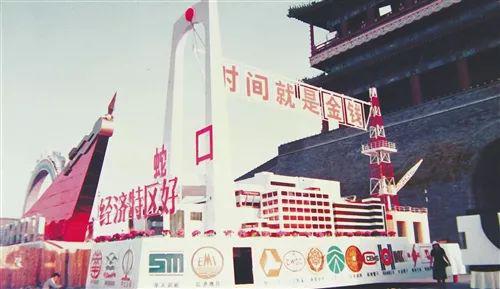 (图为1984年蛇口工业区彩车)
(图为1984年蛇口工业区彩车)
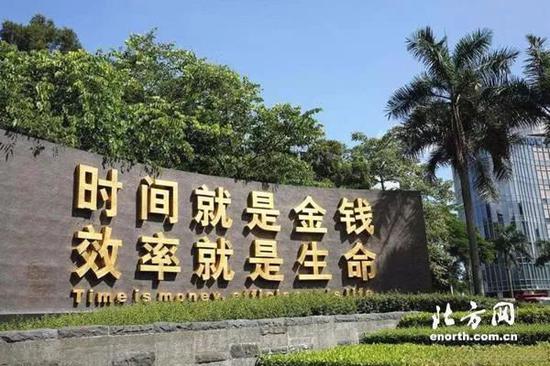 (图为深圳蛇口时间广场上“时间就是金钱,效率就是生命”的金字标语牌。)
(图为深圳蛇口时间广场上“时间就是金钱,效率就是生命”的金字标语牌。)
3
三大法宝
除了不凡的历史成就和优越的地理位置外,南山区吸引众多企业的原因何在?
主要有三个方面。
一是人才储备做得好。
为了打造创新人才聚集高地,南山创建了千人计划(南山)俱乐部、南山国际创新驿站、国际创客中心、深港青年创业基地等创新载体。
2017年8月的数据显示,南山拥有国家“千人计划”人才168人,同比增加40人,占全市的81%;“孔雀计划”人才1453人,占全市的70%。
[注:“孔雀计划”是深圳于2010年10月推出的引进高技术人才的项目。]
现在,深圳的11所高校中有9所在南山,有全职院士14名;
现有16家企业设立院士工作站,博士后科研工作(分)站46家,博士后科研流动站4家,在站博士后2622人;
在深圳市7个诺奖实验室中,南山区占了5个,包括中村修二激光照明实验室、深圳格拉布斯研究院、深圳盖姆石墨烯研究中心、深圳内尔神经可塑性实验室和深圳大学马歇尔生物医学工程实验室。南山还拥有诺奖研究所1个,即萨金特数量经济与金融研究所(北京大会汇丰商学院)。
二是营商环境体验佳。
一位当地知名企业管理人员曾对记者表示,“为高科技企业服务,做好营商环境,南山是全国最好的”。
《2019年南山区政府工作报告》指出,南山区在全市率先出台促进民营经济高质量发展若干举措,发起设立40亿元民企发展基金、5亿元融资担保基金,为民营经济加油打气、提振信心。
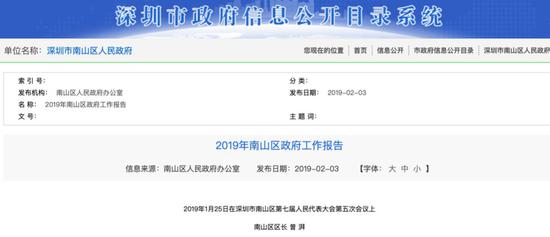
在服务方面,南山区做了这些事:
*落实了“领导挂点服务企业”制度,第一时间梳理诉求,尽最大可能解决难题,累计挂点服务企业379家,协调解决诉求500多项,真诚助力企业发展;
*发放产业扶持资金14.2亿元、住房货币补贴3.96亿元,惠及企业2500多家、人才约2万名;
*打通辖区企业参与政府采购“肠梗阻”,全年向辖区企业采购近10亿元;
推出“绿色通道”升级版,680多家企业享受教育、医疗、税务、海关等直通车服务;
*南山工会深圳湾大食堂开业,解决3000多名企业员工就餐问题……
三是对知识产权的保护最严格。
正如时任深圳市委书记的马兴瑞,在2016年接受采访时所说的,“深圳是发挥企业创新主体作用最好的城市”,其中原因就是“四个90%”:
90%以上的研发机构设立在企业;
90%以上的研发人员集中在企业;
90%以上的研发资金来源于企业;
90%以上的职务发明专利出自于企业。
因为创新的主体是企业,科技创新成果转化效率高,效果好。
为保护好企业的创新动力与成果,南山区建成全市首个全方位的“知识产权保护中心”,建筑面积 6600 平方米,引进深圳仲裁院等 6 家保护机构、美国布林克斯律师事务所等 14 家运营机构,以及 3 家行业协会,构建保护、运营、转化、协同、支撑“五大链条”。
4
去往何处?
面对美国施加的压力,南山区能做什么?
正如,任正非接受采访时所说,美国的制裁在某种程度上刺激中国踏踏实实发展电子工业。
目前,南山区政府正致力于将全球顶级创新资源加速汇集南山区。
《2019年南山区政府工作报告》在之前就亮出一些“底牌”:
*深圳湾实验室开始筹建,国家实验室预备队增至2家;
*支持南科大创设深港微电子学院,培养芯片设计、制造、检测等高端人才;
*商汤科技深圳研发中心正式启用,合作打造“AI实验学校”;
*空客(中国)创新中心、苹果深圳研发中心、中国移动智能硬件创新中心投入运营;
*埃森哲(深圳)全球创新研发中心启动建设。
相信南山区的企业们,在美国的打压下,根会扎得越来越深。
而针对美国的种种行为,5月22日,外交部发言人陆慷在例行记者会上表示:
“最近我们已经一再表明了中方反对美国滥用国家力量,肆意抹黑和打压包括中国企业在内的其他国家企业的一些做法。中方的态度是明确的,也是一贯的。对中方而言,我们一向要求中国企业在遵循市场规律和国际规则的基础上,在其他国家开展投资经营活动。同时我们也一直要求其他国家能够给予中国企业公平、非歧视的待遇。我们在这可以再次重申一下,国家之间的贸易和投资关系,必须是建立在相互尊重和平等互利的基础上的。”
不知美国何时才能真正理解这句——“国家之间的贸易和投资关系,必须是建立在相互尊重和平等互利的基础上的”。
本文中除标明来源的图片,其余均来自网络公开渠道,不能识别其来源,如有版权争议,请联系公号方。
资料来源:
1。让美国大动肝火的三家中国公司,竟然都和这个街道办有关|李净翰,每日经济新闻,2019.5.23
2。深圳南山区粤海街道火了!|邱月烨,21世纪商业评论,2019.5.22
3。大国博弈炸出中国最牛街道办,深圳粤海凭什么这么彪悍|旺角黄局长、路口大爷,智谷趋势,2019.5.22
4。被美国盯上的深圳粤海街道,年营收超1.1万亿,究竟有什么来头?|科创财经汇,2019.5.22
5。可怕的南山!刚上市136家,还有320家排队,未来将有9条地铁通科技园!|深圳梦,2017.8.15
6。为什么是深圳?|高学思,瞭望智库,2018.10.9
7。《激荡三十年》|吴晓波,中信出版集团2017年12月第三版
8。不止华为、中兴、大疆,深圳南山这个“网红街道”还走出这些牛企!|张光岩,南方Plus,2019.5.22
9。从中兴到华为再到大疆 美国的封杀见证了深圳制造业的强大|快科技,2019.5.22
10。《2018年南山区政府工作报告》、《2019年南山区政府工作报告》
The United States has killed the most cattle street in China.
The United States has killed the most cattle street in China.
Original title: The United States banned the fire in China's most cattle street! Why is Shenzhen Nanshan so embarrassing?
Source: 瞭望智库
The Guangdong-Hangzhou street in Nanshan District of Shenzhen is on fire.
Some netizens ridiculed that from ZTE, Huawei, and then to Xinjiang, the US trade war against China has not exceeded the scope of the Guangdong Street Office.
#美国 粤海街道办# Going on the microblogging hot search, the reading volume reached 14.07 million.
However, according to the Beijing News on the 22nd, the community workstation of Yuehai Street Science and Technology Park said that three companies, ZTE, Huawei and Dajiang, have all moved out of the country.
Although enterprises have left, they are indisputable in Guangdong from nothing, from small to large, from big to strong.
How strong is Nanshan District?
Text | Shu Shu
This article is compiled by Wang Zhizhi.
1
How strong is it?
Nanshan District is known as the “China Silicon Valley”.
According to statistics, there are currently 114 A-share listed companies registered in Nanshan District, Shenzhen, and most of them are high-tech industries. Correspondingly, there are 116 in Haidian District of Beijing and 19 in Shanghai Pudong New Area.
Among the 114, there are 6 medical organisms, 18 information equipment, 19 information services, and 21 electronics.
(Source: 21st Century Business Review) (Source: 21st Century Business Review)
According to the "2017 China Unicorn Enterprise Development Report", there are 14 unicorn enterprises in Shenzhen, namely: Rookie Network, Weizhong Bank, Youbie, Jubaohui, Tencent Cloud, Rouyu Technology, Tuba Rabbit, Feng Nest technology, easy-to-use technology, room more, hot mom, global supply chain, Obi Zhongguang, carbon cloud intelligence.
Except for the relocation of the company's headquarters to Longgang District, the remaining 13 companies are Nanshan enterprises.
From the perspective of the number of private enterprises, Nanshan District also dominates. The total number of private enterprises here is close to 380,000, and an average of 4 permanent residents has one company.
Eight companies, including SF Express and AAC, entered the top 500 national enterprises and surpassed the provincial one-eighth.
Ma Huateng, Xu Jiayin and Chen Zhilie were selected as “100 Outstanding Private Entrepreneurs in the 40 Years of Reform and Opening up”.
According to the "2018 Hurun Global Rich List", Ma Huateng and Xu Jiayin were selected as wealthy Chinese in the world with a wealth of 295 billion yuan and 260 billion yuan respectively.
(Source: 21st Century Business Review (Source: 21st Century Business Review)
Many technology companies bring amazing GDP.
According to data released by the local government, the GDP of Nanshan District exceeded 20 billion in 2018, reaching 501.8 billion. It ranked first in Guangdong (county) and third in the country for six consecutive years.
The resident population of Nanshan District is about 1.42 million, and the per capita GDP exceeds 350,000 yuan, which is comparable to that of developed countries.
The area of Nanshan District is 182 square kilometers, with 8 streets under its jurisdiction. Among them, the recently-recognized Yuehai Street has the strongest strength.
Yuehai Street is located in the center of Nanshan District, covering an area of about 20 square kilometers. In this small area, the GDP is as high as 250.9 billion yuan, accounting for half of the Nanshan District.
If you regard Guangdong as a city, its GDP is easily ranked among the top 100 in the country.
There are a lot of chip companies in Guangdong Street. For example, Zhongxing Micro Co., Ltd. produced multimedia chips. In 2003, it occupied 60% of the global market share.
Jingchen Semiconductor is the first chip to declare the board of the board this year, known as the "king of the set-top box chip."
The other streets are not too much. In 2017, the assets of China Merchants Street Service amounted to 260.4 billion yuan. Even the eighth-ranked Shekou Street, the target assets of the service exceeded 12 billion yuan.
Behind the many high-quality enterprises and huge GDP, it is a gratifying ability to innovate and incubate.
In the "China Regional Incubation Capability Evaluation Research Report 2016" (hereinafter referred to as the "Report"), Nanshan District ranked first with 87.58.
Beijing Haidian District ranked second with 84.00, and Shanghai Pudong New Area scored 74.78.
(Source: “China Regional Incubation Capability Evaluation Research Report 2016”) (Source: “China Regional Incubation Capability Evaluation Research Report 2016”)
Nanshan District is also among the best in the ranking of innovation achievement indicators.
According to statistics, in 2016, the number of patents granted in Nanshan District reached 242.47/10,000, and the patent density was much higher than the second place in Hangzhou Binjiang District (191.6 pieces/10,000) and the third place in Xi'an Yanta District (109.8 pieces). /10,000);
In terms of the output value of high-tech industries, Nanshan District ranked first with 415.2 billion yuan.
These two indicators fully reflect the superiority of the enterprise-led innovation model in Nanshan District.
12 enterprises and institutions such as ZTE, Mindray, Shenzhen University, South University of Science and Technology, and Advanced Institute of Chinese Academy of Sciences have won 10 national science and technology awards, accounting for 2/3 of the city;
Microcore Bio and National Technology won 2 Chinese Patent Gold Awards, accounting for 1/10 of the national total;
Tencent won the design design gold award, accounting for 1/5 of the country;
The deep-sea drilling platform “Blue Whale No. 1” developed by CIMC successfully tested the combustible ice and was praised as “the big country heavy weapon”.
In addition, China Securities Industry Association registration data shows that more than 75% of Shenzhen's venture capital and venture capital institutions are concentrated in Nanshan.
2
Where did you come from?
The development of Shenzhen Nanshan District began with reform and opening up.
On October 9, 1978, a "Request for the Full Use of Hong Kong Investment Promotion Bureau" was reported to the Central Committee of the Communist Party of China and the State Council in the name of the Ministry of Communications. For the first time, it was proposed to "adapt to the characteristics of the international market and go out to investigate and do Proposal for buying and selling.
(The picture shows the Hong Kong Investment Promotion Bureau. Source: Group's official website) (The picture shows the Hong Kong Investment Promotion Bureau. Source: Group's official website)
A few days later, Yuan Geng, the 29th chairman of China Merchants Group, officially proposed the establishment of the Shekou Industrial Development Zone in Shekou, Shenzhen: “The selection of an industrial zone in the Bao’an Shekou Commune near Hong Kong will allow the use of cheaper domestic land and The labor force makes it easy to use international funds, advanced technologies and raw materials to fully utilize and combine the existing favorable conditions."
On December 18, at the same time that the Third Plenary Session of the Eleventh Central Committee of the Party was officially opened in Beijing, the Ministry of Communications and Guangdong Province adopted the concept of Yuan Geng.
25 days later, on January 31, 1979, Yuan Gengfei went to Beijing to report to the central leadership in Zhongnanhai and proposed to give the China Merchants a piece of industrial land.
The central leadership used a pen to draw a picture on the map, and all the places including the current Baoan District to the 70-square-kilometer of OCT were included: "Yuan Geng, this is for you."
Yuan Geng was shocked and said, "How dare I want so much."
So the central leader used a red pencil to gently smudge the map and smiled: "That will give you this peninsula."
This peninsula is the future Shekou Industrial Zone, now part of the Nanshan District.
On February 2, 1979, the State Council approved the establishment of the first export processing industrial zone in mainland China by the Hong Kong Investment Promotion Bureau on 2.14 square kilometers of Shekou.
From the assumption to the action, the Shekou Industrial Zone is only three months before and after, which is rare.
After careful planning and design, on July 8, the Shekou Industrial Zone officially broke ground and was called the “opening gun” of China's reform and opening up.
(The picture shows the Shekou mountain cannon) (The picture shows the Shekou mountain cannon)
The China Merchants Bureau has spent nearly a year building a 600-meter berth and can dock cargo ships under 5,000 tons.
In this way, Shekou suddenly has the function of starting a port, and the industrial zone and Hong Kong exchange passenger liners to solve the bottleneck of freight traffic.
Yuan Geng traveled all over Hong Kong to borrow from Hong Kong businessmen and banks. In the two years before and after, China Merchants Bank borrowed 1.5 billion yuan. The money was used to balance the land, build industrial infrastructure and living facilities.
At the same time, Yuan Geng also greatly simplified the investment promotion process. Foreign businessmen went to Shekou to run the company. From land and agreement to recruitment, they often messed up all the months.
Soon, Shekou became China's most open industrial zone, with companies and talents rushing in. Over two years, more than 100 companies.
In 1984, at the 35th anniversary of the founding of the People's Republic of China in Beijing, the only one of the hundreds of floats in the company, the float in Shenzhen's Shekou Industrial Zone, hanged a bold slogan "Time is money, efficiency." It is life, which represents the spirit of Shekou and the spirit of Shenzhen.
(The picture shows the floats in Shekou Industrial Zone in 1984) (The picture shows the floats in Shekou Industrial Zone in 1984)
(The picture shows the gold placard of “Time is money, efficiency is life” on Shekou Time Square in Shenzhen.) (The picture shows the gold placard of “Time is money, efficiency is life” on Shekou Time Square in Shenzhen.)
3
Three magic weapons
In addition to the extraordinary historical achievements and superior geographical position, what is the reason for Nanshan District to attract many companies?
There are three main aspects.
First, the talent pool is doing well.
In order to build a highland for innovative talents, Nanshan has created innovative carriers such as the Thousand Talents Program (Nanshan) Club, Nanshan International Innovation Station, International Maker Center, and Shenzhen-Hong Kong Youth Entrepreneurship Base.
According to the data of August 2017, Nanshan has 168 national “Thousand Talents” talents, an increase of 40 people, accounting for 81% of the city; “Peacock Project” talents of 1453, accounting for 70% of the city.
[Note: The Peacock Project is a project launched by Shenzhen in October 2010 to introduce high-tech talent. ]
At present, 9 of the 11 universities in Shenzhen are located in Nanshan, and there are 14 full-time academicians.
There are 16 enterprises in the establishment of academician workstations, 46 post-doctoral research work (sub-station) stations, 4 post-doctoral research stations, and 2262 post-doctoral stations;
Among the 7 Nobel Prize-winning laboratories in Shenzhen, Nanshan District has 5, including Nakamura Shuji Laser Lighting Laboratory, Shenzhen Grubbs Research Institute, Shenzhen Gamm Graphene Research Center, Shenzhen Nell Neuroplastic Laboratory and Shenzhen University Marshall Biomedical Engineering Laboratory. Nanshan also owns one Nobel Prize Research Institute, the Sargent Institute of Quantitative Economics and Finance (Beijing Conference HSBC Business School).
Second, the business environment experience is good.
A well-known local management executive once told reporters that “Nanshan is the best in the country for serving high-tech enterprises and doing business.”
According to the "Report on the Work of the Nanshan District Government in 2019", Nanshan District took the lead in introducing some measures to promote the high-quality development of the private economy, and initiated the establishment of a 4 billion yuan private enterprise development fund and a 500 million yuan financing guarantee fund to cheer up and boost the private economy. confidence.
In terms of services, Nanshan District has done these things:
* Implemented the "Leadership-to-Point Service Enterprise" system, and sorted out the appeals in the first time, solved the problem as much as possible, accumulated 379 service enterprises, coordinated and resolved more than 500 appeals, and sincerely assisted the development of the enterprise;
* Disbursed 1.42 billion yuan of industrial support funds and 396 million yuan of housing monetary subsidies, benefiting more than 2,500 enterprises and about 20,000 talents;
* Open up enterprises in the jurisdiction to participate in government procurement of "intestinal obstruction", and purchase nearly 1 billion yuan from enterprises in the jurisdiction throughout the year;
Launched the “Green Channel” upgrade version, more than 680 companies enjoy education, medical, tax, customs and other through train services;
* Nanshan Trade Union Shenzhen Bay Restaurant was opened to solve the problem of dining for more than 3,000 employees...
Third, the protection of intellectual property rights is the most stringent.
As Ma Xingrui, then secretary of the Shenzhen Municipal Party Committee, said in an interview in 2016, “Shenzhen is the city with the best role in the innovation of enterprises”, the reason is “four 90%”:
More than 90% of R&D institutions are established in enterprises;
More than 90% of R&D personnel are concentrated in the enterprise;
More than 90% of research and development funds come from enterprises;
More than 90% of service invention patents come from enterprises.
Because the main body of innovation is the enterprise, the transformation of scientific and technological innovation results is highly efficient and effective.
In order to protect the innovation power and achievements of the company, Nanshan District has built the city's first comprehensive “Intellectual Property Protection Center” with a construction area of 6,600 square meters, and introduced six protection agencies such as the Shenzhen Arbitration Institute and the American Brinks Law Firm. It has 14 operating agencies and 3 industry associations to build, protect, operate, transform, coordinate and support the “five major chains”.
4
Where are you going?
What can Nanshan District do in the face of the pressure exerted by the United States?
As Ren Zhengfei said in an interview, the US sanctions have stimulated China to develop the electronics industry to a certain extent.
At present, the Nanshan District Government is working to accelerate the integration of the world's top innovation resources into the Nanshan District.
The "Nanshan District Government Work Report of 2019" has shown some "cards" before:
* Shenzhen Bay Laboratory began preparations, and the number of national laboratory reserves increased to two;
* Supporting South University of Science and Technology to create the Shenzhen-Hong Kong Microelectronics Institute to train high-end talents in chip design, manufacturing and testing;
* Shangtang Technology Shenzhen R&D Center was officially opened to cooperate to build "AI Experimental School";
* Airbus (China) Innovation Center, Apple Shenzhen R&D Center, China Mobile Intelligent Hardware Innovation Center put into operation;
* Accenture (Shenzhen) Global Innovation R&D Center started construction.
I believe that the enterprises in Nanshan District will be deeper and deeper under the pressure of the United States.
In response to various acts of the United States, on May 22, Foreign Ministry Spokesman Lu Hao said at a regular press conference:
"We have recently stated that China has opposed the abuse of state power by the United States and has arbitrarily discredited and suppressed some practices of enterprises in other countries, including Chinese enterprises. The attitude of the Chinese side is clear and consistent. For the Chinese side, we have always requested Chinese companies are investing in other countries on the basis of market rules and international rules. At the same time, we have been asking other countries to give Chinese companies fair and non-discriminatory treatment. We can reiterate this again between countries. The trade and investment relationship must be based on mutual respect, equality and mutual benefit."
I don't know when the United States can really understand this sentence - "The trade and investment relations between countries must be based on mutual respect, equality and mutual benefit."
In this article, except for the pictures indicating the source, the rest are from the open channels of the network, and the source cannot be identified. If there is a copyright dispute, please contact the public number.
source:
1. The three Chinese companies that have made the United States so angry have been related to this street office|李净翰,Daily Economic News,2019.5.23
2. Shenzhen Nanhai District Yuehai Street is on fire! | Qiu Yuejun, 21st Century Business Review, 2010.5.22
3. The big country game blows out China's most cattle street office, Shenzhen Yuehai is so embarrassed | Mong Kok Huang Director, Junkou Grandpa, Zhigu Trend, 2011.5.22
美封杀让中国最牛街道办火了 这里凭啥这么彪悍?
美封杀让中国最牛街道办火了 这里凭啥这么彪悍?
原标题:美国封杀让中国最牛街道办火了!深圳南山凭什么这么彪悍?
来源:瞭望智库
深圳南山区粤海街道火了。
有网友调侃道,从中兴、华为,再到大疆,美国发动的对华贸易战,一直没有超出粤海街道办的范围。

#美国 粤海街道办#顺势登上微博热搜,阅读量达到1407万。

不过,据新京报22日消息,粤海街道科技园社区工作站表示,网上所传中兴、华为和大疆三家企业均已搬离当地。
虽然企业已离去,但它们在粤海从无到有、从小到大、从大到强却是不争的事实。
南山区到底有多强?
文 | 库叔
本文由瞭望智库综编。
1
到底多强?
南山区被称为“中国硅谷”。
据统计,目前注册地址在深圳南山区的A股上市公司有114家,且多为高新技术行业。与之对应的是北京海淀区有116家,上海浦东新区有19家。
这114家中,包含医药生物6家、信息设备18家、信息服务19家、电子21家。

据《2017中国独角兽企业发展报告》,深圳共有14家独角兽企业,分别为:菜鸟网络、微众银行、优必选、聚宝匯、腾讯云、柔宇科技、土巴兔、丰巢科技、随手科技、房多多、辣妈帮、越海全球供应链、奥比中光、碳云智能。
除柔宇科技总部迁往龙岗区外,其余13家企业均为南山企业。
从民营企业数量看,南山区也独占鳌头。这里的民企总数接近38万家,平均4名常住人口就拥有1家企业。
顺丰、瑞声科技等8家企业,入选中国民企500强,超全省1/8。
马化腾、许家印、陈志列3人入选“改革开放40年百名杰出民营企业家”。
根据《2018年胡润全球富豪榜》,马化腾和许家印,分别以2950亿元和2600亿元的财富,入选全球华人富豪。

众多科技公司,带来的是惊人的GDP。
根据当地政府发布的数据,2018年南山区的GDP突破5000亿大关,达到了5018亿,连续6年位列广东区(县)第一、全国第三。
南山区常驻人口约为142万人,人均GDP超35万元,堪比发达国家水平。
南山区面积为182平方公里,下辖8个街道,其中,最近备受瞩目的粤海街道实力最强。
粤海街道位于南山区的中心,面积约20平方公里,在这片不大的地方,GDP高达2509亿元,占了南山区的半壁江山。
如果把粤海看做一座城市的话,其GDP轻松跻身全国100强。
粤海街道芯片企业云集,如中星微公司生产多媒体芯片,2003年时曾占据全球市场份额的60%。
晶晨半导体则是今年申报科创板的芯片第一股,被称为“机顶盒芯片之王”。
其他街道也不遑多让,2017年,招商街道服务的资产就高达2604亿元,即使排名第八的蛇口街道,服务的对象资产也超过120亿元。
众多优质企业与巨量GDP的背后,是可喜的创新能力与孵化能力。
在《中国区域孵化能力评价研究报告2016》(以下简称《报告》)中,南山区就以87.58分位居第一。
北京海淀区以84.00分位居第二,上海浦东新区得分74.78。

南山区在创新成果指标的排名也是名列前茅。
据统计,2016年南山区的专利授权数达到242.47件/万人,专利密度远远高于第二位的杭州滨江区(191.6件/万人)和第三位的西安雁塔区(109.8件/万人);
在高新技术产业产值方面,南山区以4152亿元稳居榜首。
这两个指标充分反映出南山区以企业为主导的创新模式的优越性。
中兴、迈瑞、深大、南科大、中科院先进院等12家企业和机构,摘取10项国家科学技术奖,占全市2/3;
微芯生物、国民技术获2项中国专利金奖,占全国1/10;
腾讯获外观设计金奖,占全国1/5;
中集研制的深海钻井平台“蓝鲸1号”成功试采可燃冰,被誉为“大国重器”。
此外,中国证券业协会注册登记数据显示,深圳超过75%的风投、创投机构集聚在南山。
2
从何而来?
深圳南山区的发展,始于改革开放。
1978年10月9日,一份《关于充分利用香港招商局问题的请示》以交通部的名义上报中共中央、国务院,第一次提出了“适应国际市场的特点,走出门去搞调查,做买卖”的建议。

数日后,招商局第29任董事长袁庚正式提出在深圳蛇口筹建蛇口工业开发区的构想:“选定在临近香港的宝安蛇口公社境内建立工业区。这样既能利用国内较廉价的土地和劳动力,又便于利用国际的资金、先进技术和原料,把两者现有的有利条件充分利用并结合起来。”
12月18日,在党的十一届三中全会在北京正式开幕的同时,交通部和广东省通过了袁庚的构想。
25天后,1979年1月31日,袁庚飞赴北京,在中南海当面向中央领导汇报,提出要给招商局一块工业用地。
中央领导用笔在地图上一画,就把包括现在的宝安区到华侨城七八十平方公里的地方都划了进去:“袁庚,这个都给你。”
袁庚吓了一跳,说:“我怎么敢要这么多。”
于是,中央领导用红铅笔在地图上轻轻一勾,笑道:“那就给你这个半岛吧。”
这个半岛便是日后的蛇口工业区,现在隶属于南山区。
1979年2月2日,国务院批准由香港招商局在蛇口2.14平方公里的土地上,建立中国大陆第一个出口加工工业区。
蛇口工业区从设想到行动,前后仅三个月,实属罕见。
经过认真的规划设计后,7月8日,蛇口工业区正式破土动工,被称为中国改革开放的“开山炮”。

香港招商局花了近一年的时间建成了600米的码头泊位,可停靠5000吨以下的货船。
这样,蛇口顿时具备起港运的功能,工业区与香港互通航班客轮,解决了货运交通的瓶颈。
袁庚走遍香港,向港商和银行借贷,前后两年,招商局借进15亿元。这笔钱被用来平衡土地、建设工业基础设施和生活设施。
同时,袁庚还大大简化招商程序,外商到蛇口办公司,从土地、协议到招工,往往个把月便能全部搞掂。
很快,蛇口就成了中国最开放的工业区,企业和人才纷涌而入,两年多的时间,企业已超过百家。
1984年,在北京举行的新中国成立35周年大庆上,上百部彩车中惟一的一部企业彩车——深圳蛇口工业区的彩车挂着一幅醒目的标语“时间就是金钱,效率就是生命”,代表着蛇口精神和深圳精神。


3
三大法宝
除了不凡的历史成就和优越的地理位置外,南山区吸引众多企业的原因何在?
主要有三个方面。
一是人才储备做得好。
为了打造创新人才聚集高地,南山创建了千人计划(南山)俱乐部、南山国际创新驿站、国际创客中心、深港青年创业基地等创新载体。
2017年8月的数据显示,南山拥有国家“千人计划”人才168人,同比增加40人,占全市的81%;“孔雀计划”人才1453人,占全市的70%。
[注:“孔雀计划”是深圳于2010年10月推出的引进高技术人才的项目。]
现在,深圳的11所高校中有9所在南山,有全职院士14名;
现有16家企业设立院士工作站,博士后科研工作(分)站46家,博士后科研流动站4家,在站博士后2622人;
在深圳市7个诺奖实验室中,南山区占了5个,包括中村修二激光照明实验室、深圳格拉布斯研究院、深圳盖姆石墨烯研究中心、深圳内尔神经可塑性实验室和深圳大学马歇尔生物医学工程实验室。南山还拥有诺奖研究所1个,即萨金特数量经济与金融研究所(北京大会汇丰商学院)。
二是营商环境体验佳。
一位当地知名企业管理人员曾对记者表示,“为高科技企业服务,做好营商环境,南山是全国最好的”。
《2019年南山区政府工作报告》指出,南山区在全市率先出台促进民营经济高质量发展若干举措,发起设立40亿元民企发展基金、5亿元融资担保基金,为民营经济加油打气、提振信心。

在服务方面,南山区做了这些事:
*落实了“领导挂点服务企业”制度,第一时间梳理诉求,尽最大可能解决难题,累计挂点服务企业379家,协调解决诉求500多项,真诚助力企业发展;
*发放产业扶持资金14.2亿元、住房货币补贴3.96亿元,惠及企业2500多家、人才约2万名;
*打通辖区企业参与政府采购“肠梗阻”,全年向辖区企业采购近10亿元;
推出“绿色通道”升级版,680多家企业享受教育、医疗、税务、海关等直通车服务;
*南山工会深圳湾大食堂开业,解决3000多名企业员工就餐问题……
三是对知识产权的保护最严格。
正如时任深圳市委书记的马兴瑞,在2016年接受采访时所说的,“深圳是发挥企业创新主体作用最好的城市”,其中原因就是“四个90%”:
90%以上的研发机构设立在企业;
90%以上的研发人员集中在企业;
90%以上的研发资金来源于企业;
90%以上的职务发明专利出自于企业。
因为创新的主体是企业,科技创新成果转化效率高,效果好。
为保护好企业的创新动力与成果,南山区建成全市首个全方位的“知识产权保护中心”,建筑面积 6600 平方米,引进深圳仲裁院等 6 家保护机构、美国布林克斯律师事务所等 14 家运营机构,以及 3 家行业协会,构建保护、运营、转化、协同、支撑“五大链条”。
4
去往何处?
面对美国施加的压力,南山区能做什么?
正如,任正非接受采访时所说,美国的制裁在某种程度上刺激中国踏踏实实发展电子工业。
目前,南山区政府正致力于将全球顶级创新资源加速汇集南山区。
《2019年南山区政府工作报告》在之前就亮出一些“底牌”:
*深圳湾实验室开始筹建,国家实验室预备队增至2家;
*支持南科大创设深港微电子学院,培养芯片设计、制造、检测等高端人才;
*商汤科技深圳研发中心正式启用,合作打造“AI实验学校”;
*空客(中国)创新中心、苹果深圳研发中心、中国移动智能硬件创新中心投入运营;
*埃森哲(深圳)全球创新研发中心启动建设。
相信南山区的企业们,在美国的打压下,根会扎得越来越深。
而针对美国的种种行为,5月22日,外交部发言人陆慷在例行记者会上表示:
“最近我们已经一再表明了中方反对美国滥用国家力量,肆意抹黑和打压包括中国企业在内的其他国家企业的一些做法。中方的态度是明确的,也是一贯的。对中方而言,我们一向要求中国企业在遵循市场规律和国际规则的基础上,在其他国家开展投资经营活动。同时我们也一直要求其他国家能够给予中国企业公平、非歧视的待遇。我们在这可以再次重申一下,国家之间的贸易和投资关系,必须是建立在相互尊重和平等互利的基础上的。”
不知美国何时才能真正理解这句——“国家之间的贸易和投资关系,必须是建立在相互尊重和平等互利的基础上的”。
本文中除标明来源的图片,其余均来自网络公开渠道,不能识别其来源,如有版权争议,请联系公号方。
资料来源:
1。让美国大动肝火的三家中国公司,竟然都和这个街道办有关|李净翰,每日经济新闻,2019.5.23
2。深圳南山区粤海街道火了!|邱月烨,21世纪商业评论,2019.5.22
3。大国博弈炸出中国最牛街道办,深圳粤海凭什么这么彪悍|旺角黄局长、路口大爷,智谷趋势,2019.5.22
4。被美国盯上的深圳粤海街道,年营收超1.1万亿,究竟有什么来头?|科创财经汇,2019.5.22
5。可怕的南山!刚上市136家,还有320家排队,未来将有9条地铁通科技园!|深圳梦,2017.8.15
6。为什么是深圳?|高学思,瞭望智库,2018.10.9
7。《激荡三十年》|吴晓波,中信出版集团2017年12月第三版
8。不止华为、中兴、大疆,深圳南山这个“网红街道”还走出这些牛企!|张光岩,南方Plus,2019.5.22
9。从中兴到华为再到大疆 美国的封杀见证了深圳制造业的强大|快科技,2019.5.22
10。《2018年南山区政府工作报告》、《2019年南山区政府工作报告》
The United States has killed the most cattle street in China.
The United States has killed the most cattle street in China.
Original title: The United States banned the fire in China's most cattle street! Why is Shenzhen Nanshan so embarrassing?
Source: 瞭望智库
The Guangdong-Hangzhou street in Nanshan District of Shenzhen is on fire.
Some netizens ridiculed that from ZTE, Huawei, and then to Xinjiang, the US trade war against China has not exceeded the scope of the Guangdong Street Office.
#美国 粤海街道办# Going on the microblogging hot search, the reading volume reached 14.07 million.
However, according to the Beijing News on the 22nd, the community workstation of Yuehai Street Science and Technology Park said that three companies, ZTE, Huawei and Dajiang, have all moved out of the country.
Although enterprises have left, they are indisputable in Guangdong from nothing, from small to large, from big to strong.
How strong is Nanshan District?
Text | Shu Shu
This article is compiled by Wang Zhizhi.
1
How strong is it?
Nanshan District is known as the “China Silicon Valley”.
According to statistics, there are currently 114 A-share listed companies registered in Nanshan District, Shenzhen, and most of them are high-tech industries. Correspondingly, there are 116 in Haidian District of Beijing and 19 in Shanghai Pudong New Area.
Among the 114, there are 6 medical organisms, 18 information equipment, 19 information services, and 21 electronics.
(Source: 21st Century Business Review) (Source: 21st Century Business Review)
According to the "2017 China Unicorn Enterprise Development Report", there are 14 unicorn enterprises in Shenzhen, namely: Rookie Network, Weizhong Bank, Youbie, Jubaohui, Tencent Cloud, Rouyu Technology, Tuba Rabbit, Feng Nest technology, easy-to-use technology, room more, hot mom, global supply chain, Obi Zhongguang, carbon cloud intelligence.
Except for the relocation of the company's headquarters to Longgang District, the remaining 13 companies are Nanshan enterprises.
From the perspective of the number of private enterprises, Nanshan District also dominates. The total number of private enterprises here is close to 380,000, and an average of 4 permanent residents has one company.
Eight companies, including SF Express and AAC, entered the top 500 national enterprises and surpassed the provincial one-eighth.
Ma Huateng, Xu Jiayin and Chen Zhilie were selected as “100 Outstanding Private Entrepreneurs in the 40 Years of Reform and Opening up”.
According to the "2018 Hurun Global Rich List", Ma Huateng and Xu Jiayin were selected as wealthy Chinese in the world with a wealth of 295 billion yuan and 260 billion yuan respectively.
(Source: 21st Century Business Review (Source: 21st Century Business Review)
Many technology companies bring amazing GDP.
According to data released by the local government, the GDP of Nanshan District exceeded 20 billion in 2018, reaching 501.8 billion. It ranked first in Guangdong (county) and third in the country for six consecutive years.
The resident population of Nanshan District is about 1.42 million, and the per capita GDP exceeds 350,000 yuan, which is comparable to that of developed countries.
The area of Nanshan District is 182 square kilometers, with 8 streets under its jurisdiction. Among them, the recently-recognized Yuehai Street has the strongest strength.
Yuehai Street is located in the center of Nanshan District, covering an area of about 20 square kilometers. In this small area, the GDP is as high as 250.9 billion yuan, accounting for half of the Nanshan District.
If you regard Guangdong as a city, its GDP is easily ranked among the top 100 in the country.
There are a lot of chip companies in Guangdong Street. For example, Zhongxing Micro Co., Ltd. produced multimedia chips. In 2003, it occupied 60% of the global market share.
Jingchen Semiconductor is the first chip to declare the board of the board this year, known as the "king of the set-top box chip."
The other streets are not too much. In 2017, the assets of China Merchants Street Service amounted to 260.4 billion yuan. Even the eighth-ranked Shekou Street, the target assets of the service exceeded 12 billion yuan.
Behind the many high-quality enterprises and huge GDP, it is a gratifying ability to innovate and incubate.
In the "China Regional Incubation Capability Evaluation Research Report 2016" (hereinafter referred to as the "Report"), Nanshan District ranked first with 87.58.
Beijing Haidian District ranked second with 84.00, and Shanghai Pudong New Area scored 74.78.
(Source: “China Regional Incubation Capability Evaluation Research Report 2016”) (Source: “China Regional Incubation Capability Evaluation Research Report 2016”)
Nanshan District is also among the best in the ranking of innovation achievement indicators.
According to statistics, in 2016, the number of patents granted in Nanshan District reached 242.47/10,000, and the patent density was much higher than the second place in Hangzhou Binjiang District (191.6 pieces/10,000) and the third place in Xi'an Yanta District (109.8 pieces). /10,000);
In terms of the output value of high-tech industries, Nanshan District ranked first with 415.2 billion yuan.
These two indicators fully reflect the superiority of the enterprise-led innovation model in Nanshan District.
12 enterprises and institutions such as ZTE, Mindray, Shenzhen University, South University of Science and Technology, and Advanced Institute of Chinese Academy of Sciences have won 10 national science and technology awards, accounting for 2/3 of the city;
Microcore Bio and National Technology won 2 Chinese Patent Gold Awards, accounting for 1/10 of the national total;
Tencent won the design design gold award, accounting for 1/5 of the country;
The deep-sea drilling platform “Blue Whale No. 1” developed by CIMC successfully tested the combustible ice and was praised as “the big country heavy weapon”.
In addition, China Securities Industry Association registration data shows that more than 75% of Shenzhen's venture capital and venture capital institutions are concentrated in Nanshan.
2
Where did you come from?
The development of Shenzhen Nanshan District began with reform and opening up.
On October 9, 1978, a "Request for the Full Use of Hong Kong Investment Promotion Bureau" was reported to the Central Committee of the Communist Party of China and the State Council in the name of the Ministry of Communications. For the first time, it was proposed to "adapt to the characteristics of the international market and go out to investigate and do Proposal for buying and selling.
(The picture shows the Hong Kong Investment Promotion Bureau. Source: Group's official website) (The picture shows the Hong Kong Investment Promotion Bureau. Source: Group's official website)
A few days later, Yuan Geng, the 29th chairman of China Merchants Group, officially proposed the establishment of the Shekou Industrial Development Zone in Shekou, Shenzhen: “The selection of an industrial zone in the Bao’an Shekou Commune near Hong Kong will allow the use of cheaper domestic land and The labor force makes it easy to use international funds, advanced technologies and raw materials to fully utilize and combine the existing favorable conditions."
On December 18, at the same time that the Third Plenary Session of the Eleventh Central Committee of the Party was officially opened in Beijing, the Ministry of Communications and Guangdong Province adopted the concept of Yuan Geng.
25 days later, on January 31, 1979, Yuan Gengfei went to Beijing to report to the central leadership in Zhongnanhai and proposed to give the China Merchants a piece of industrial land.
The central leadership used a pen to draw a picture on the map, and all the places including the current Baoan District to the 70-square-kilometer of OCT were included: "Yuan Geng, this is for you."
Yuan Geng was shocked and said, "How dare I want so much."
So the central leader used a red pencil to gently smudge the map and smiled: "That will give you this peninsula."
This peninsula is the future Shekou Industrial Zone, now part of the Nanshan District.
On February 2, 1979, the State Council approved the establishment of the first export processing industrial zone in mainland China by the Hong Kong Investment Promotion Bureau on 2.14 square kilometers of Shekou.
From the assumption to the action, the Shekou Industrial Zone is only three months before and after, which is rare.
After careful planning and design, on July 8, the Shekou Industrial Zone officially broke ground and was called the “opening gun” of China's reform and opening up.
(The picture shows the Shekou mountain cannon) (The picture shows the Shekou mountain cannon)
The China Merchants Bureau has spent nearly a year building a 600-meter berth and can dock cargo ships under 5,000 tons.
In this way, Shekou suddenly has the function of starting a port, and the industrial zone and Hong Kong exchange passenger liners to solve the bottleneck of freight traffic.
Yuan Geng traveled all over Hong Kong to borrow from Hong Kong businessmen and banks. In the two years before and after, China Merchants Bank borrowed 1.5 billion yuan. The money was used to balance the land, build industrial infrastructure and living facilities.
At the same time, Yuan Geng also greatly simplified the investment promotion process. Foreign businessmen went to Shekou to run the company. From land and agreement to recruitment, they often messed up all the months.
Soon, Shekou became China's most open industrial zone, with companies and talents rushing in. Over two years, more than 100 companies.
In 1984, at the 35th anniversary of the founding of the People's Republic of China in Beijing, the only one of the hundreds of floats in the company, the float in Shenzhen's Shekou Industrial Zone, hanged a bold slogan "Time is money, efficiency." It is life, which represents the spirit of Shekou and the spirit of Shenzhen.
(The picture shows the floats in Shekou Industrial Zone in 1984) (The picture shows the floats in Shekou Industrial Zone in 1984)
(The picture shows the gold placard of “Time is money, efficiency is life” on Shekou Time Square in Shenzhen.) (The picture shows the gold placard of “Time is money, efficiency is life” on Shekou Time Square in Shenzhen.)
3
Three magic weapons
In addition to the extraordinary historical achievements and superior geographical position, what is the reason for Nanshan District to attract many companies?
There are three main aspects.
First, the talent pool is doing well.
In order to build a highland for innovative talents, Nanshan has created innovative carriers such as the Thousand Talents Program (Nanshan) Club, Nanshan International Innovation Station, International Maker Center, and Shenzhen-Hong Kong Youth Entrepreneurship Base.
According to the data of August 2017, Nanshan has 168 national “Thousand Talents” talents, an increase of 40 people, accounting for 81% of the city; “Peacock Project” talents of 1453, accounting for 70% of the city.
[Note: The Peacock Project is a project launched by Shenzhen in October 2010 to introduce high-tech talent. ]
At present, 9 of the 11 universities in Shenzhen are located in Nanshan, and there are 14 full-time academicians.
There are 16 enterprises in the establishment of academician workstations, 46 post-doctoral research work (sub-station) stations, 4 post-doctoral research stations, and 2262 post-doctoral stations;
Among the 7 Nobel Prize-winning laboratories in Shenzhen, Nanshan District has 5, including Nakamura Shuji Laser Lighting Laboratory, Shenzhen Grubbs Research Institute, Shenzhen Gamm Graphene Research Center, Shenzhen Nell Neuroplastic Laboratory and Shenzhen University Marshall Biomedical Engineering Laboratory. Nanshan also owns one Nobel Prize Research Institute, the Sargent Institute of Quantitative Economics and Finance (Beijing Conference HSBC Business School).
Second, the business environment experience is good.
A well-known local management executive once told reporters that “Nanshan is the best in the country for serving high-tech enterprises and doing business.”
According to the "Report on the Work of the Nanshan District Government in 2019", Nanshan District took the lead in introducing some measures to promote the high-quality development of the private economy, and initiated the establishment of a 4 billion yuan private enterprise development fund and a 500 million yuan financing guarantee fund to cheer up and boost the private economy. confidence.
In terms of services, Nanshan District has done these things:
* Implemented the "Leadership-to-Point Service Enterprise" system, and sorted out the appeals in the first time, solved the problem as much as possible, accumulated 379 service enterprises, coordinated and resolved more than 500 appeals, and sincerely assisted the development of the enterprise;
* Disbursed 1.42 billion yuan of industrial support funds and 396 million yuan of housing monetary subsidies, benefiting more than 2,500 enterprises and about 20,000 talents;
* Open up enterprises in the jurisdiction to participate in government procurement of "intestinal obstruction", and purchase nearly 1 billion yuan from enterprises in the jurisdiction throughout the year;
Launched the “Green Channel” upgrade version, more than 680 companies enjoy education, medical, tax, customs and other through train services;
* Nanshan Trade Union Shenzhen Bay Restaurant was opened to solve the problem of dining for more than 3,000 employees...
Third, the protection of intellectual property rights is the most stringent.
As Ma Xingrui, then secretary of the Shenzhen Municipal Party Committee, said in an interview in 2016, “Shenzhen is the city with the best role in the innovation of enterprises”, the reason is “four 90%”:
More than 90% of R&D institutions are established in enterprises;
More than 90% of R&D personnel are concentrated in the enterprise;
More than 90% of research and development funds come from enterprises;
More than 90% of service invention patents come from enterprises.
Because the main body of innovation is the enterprise, the transformation of scientific and technological innovation results is highly efficient and effective.
In order to protect the innovation power and achievements of the company, Nanshan District has built the city's first comprehensive “Intellectual Property Protection Center” with a construction area of 6,600 square meters, and introduced six protection agencies such as the Shenzhen Arbitration Institute and the American Brinks Law Firm. It has 14 operating agencies and 3 industry associations to build, protect, operate, transform, coordinate and support the “five major chains”.
4
Where are you going?
What can Nanshan District do in the face of the pressure exerted by the United States?
As Ren Zhengfei said in an interview, the US sanctions have stimulated China to develop the electronics industry to a certain extent.
At present, the Nanshan District Government is working to accelerate the integration of the world's top innovation resources into the Nanshan District.
The "Nanshan District Government Work Report of 2019" has shown some "cards" before:
* Shenzhen Bay Laboratory began preparations, and the number of national laboratory reserves increased to two;
* Supporting South University of Science and Technology to create the Shenzhen-Hong Kong Microelectronics Institute to train high-end talents in chip design, manufacturing and testing;
* Shangtang Technology Shenzhen R&D Center was officially opened to cooperate to build "AI Experimental School";
* Airbus (China) Innovation Center, Apple Shenzhen R&D Center, China Mobile Intelligent Hardware Innovation Center put into operation;
* Accenture (Shenzhen) Global Innovation R&D Center started construction.
I believe that the enterprises in Nanshan District will be deeper and deeper under the pressure of the United States.
In response to various acts of the United States, on May 22, Foreign Ministry Spokesman Lu Hao said at a regular press conference:
"We have recently stated that China has opposed the abuse of state power by the United States and has arbitrarily discredited and suppressed some practices of enterprises in other countries, including Chinese enterprises. The attitude of the Chinese side is clear and consistent. For the Chinese side, we have always requested Chinese companies are investing in other countries on the basis of market rules and international rules. At the same time, we have been asking other countries to give Chinese companies fair and non-discriminatory treatment. We can reiterate this again between countries. The trade and investment relationship must be based on mutual respect, equality and mutual benefit."
I don't know when the United States can really understand this sentence - "The trade and investment relations between countries must be based on mutual respect, equality and mutual benefit."
In this article, except for the pictures indicating the source, the rest are from the open channels of the network, and the source cannot be identified. If there is a copyright dispute, please contact the public number.
source:
1. The three Chinese companies that have made the United States so angry have been related to this street office|李净翰,Daily Economic News,2019.5.23
2. Shenzhen Nanhai District Yuehai Street is on fire! | Qiu Yuejun, 21st Century Business Review, 2010.5.22
3. The big country game blows out China's most cattle street office, Shenzhen Yuehai is so embarrassed | Mong Kok Huang Director, Junkou Grandpa, Zhigu Trend, 2011.5.22
